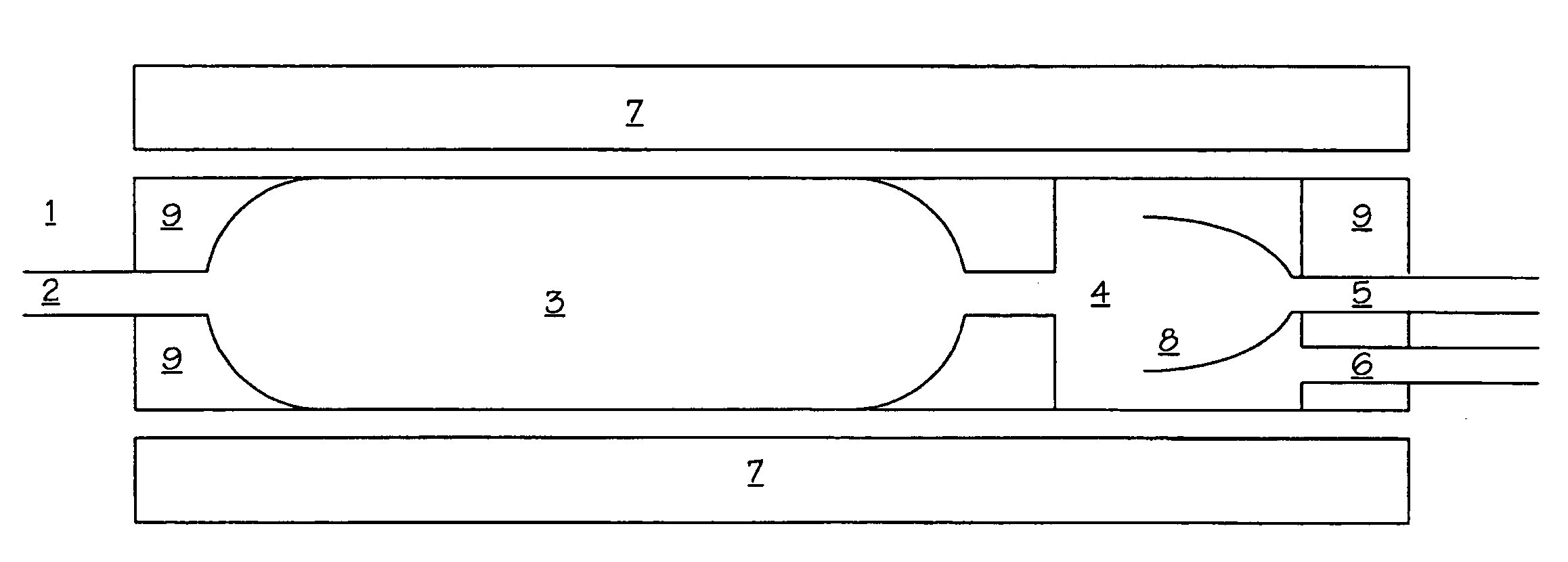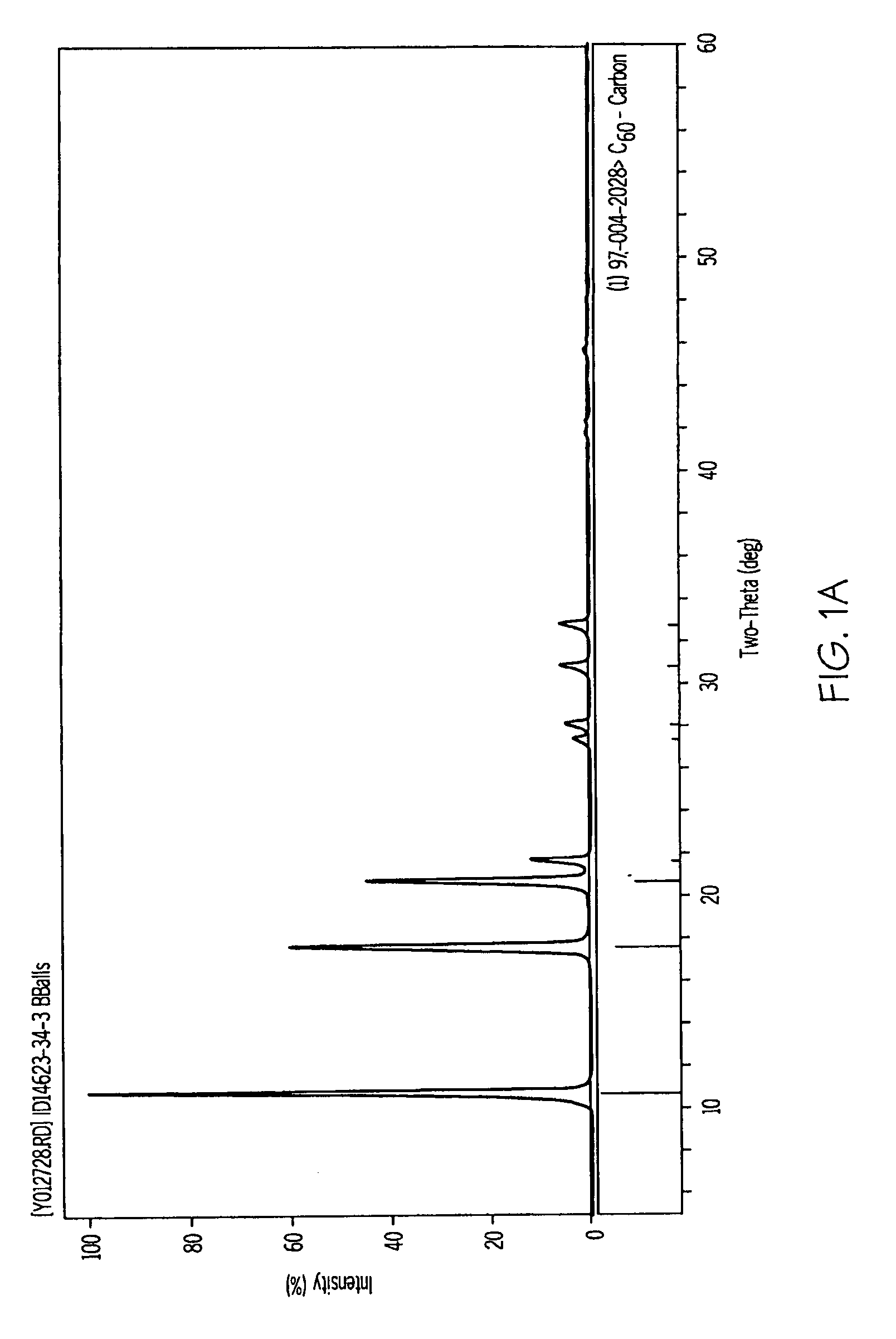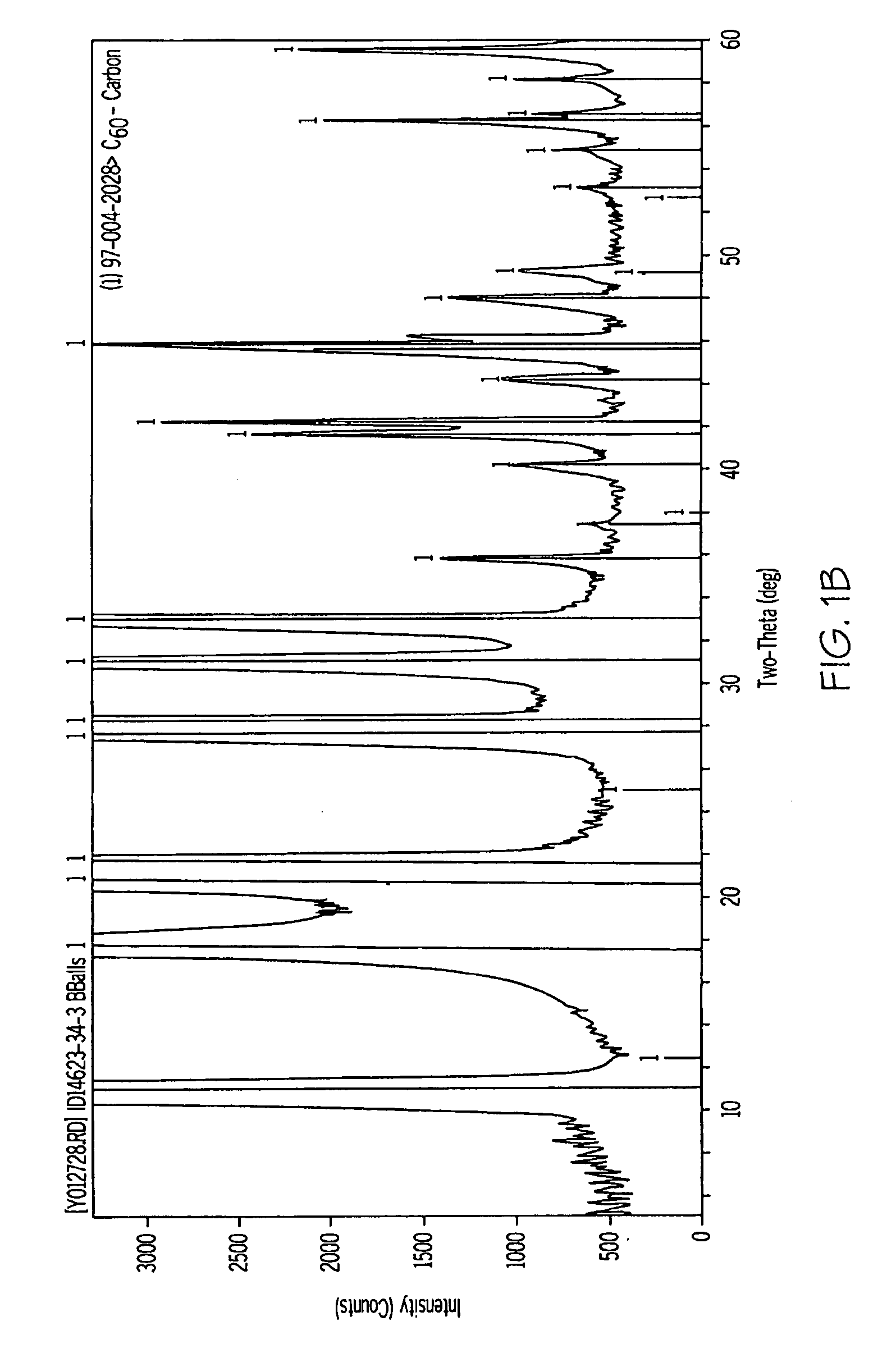Method and apparatus for high mass concentration NANO particle generation
a nano-particle, high-mass concentration technology, applied in the direction of applications, biocide, aerosol delivery, etc., can solve the problems of inability to determine the specific toxicity of many of these materials when compared to other materials, and the approach is generally undesirable for generating aerosols for inhalation studies
- Summary
- Abstract
- Description
- Claims
- Application Information
AI Technical Summary
Benefits of technology
Problems solved by technology
Method used
Image
Examples
Embodiment Construction
[0050]The final schematic of the system used to generate the aerosols of C60 nano particles is depicted in FIG. 12.
[0051]To demonstrate one embodiment of the present invention, a series of experiments were conducted using C60 particles supplied by SES Research, Houston, Tex. The bulk material consisted of dark colored, fine particles and had been stored at room temperature. The bulk material was milled in a Wig-L-Bug (Crystal Laboratories, Garfield, N.J.) for about 2 minutes before feeding to the generator.
[0052]The solid air disperser used to initially generate C60 aerosols for these studies is available from the assignee herein, Battelle Memorial Institute, Columbus Ohio. Briefly, as shown in FIGS. 2, 3a and 3b, it consisted of a rotary dust feed device 10 coupled to a single jet Particle Attrition Chamber (PAC) 14.
[0053]As shown in FIG. 2, the rotary dust feed device 10 consists of a drum (not visible), a body 11, a cap 12 and a drum rotation driver 13. The drum, which rotated du...
PUM
| Property | Measurement | Unit |
|---|---|---|
| Temperature | aaaaa | aaaaa |
| Temperature | aaaaa | aaaaa |
| Fraction | aaaaa | aaaaa |
Abstract
Description
Claims
Application Information
 Login to View More
Login to View More - R&D
- Intellectual Property
- Life Sciences
- Materials
- Tech Scout
- Unparalleled Data Quality
- Higher Quality Content
- 60% Fewer Hallucinations
Browse by: Latest US Patents, China's latest patents, Technical Efficacy Thesaurus, Application Domain, Technology Topic, Popular Technical Reports.
© 2025 PatSnap. All rights reserved.Legal|Privacy policy|Modern Slavery Act Transparency Statement|Sitemap|About US| Contact US: help@patsnap.com



